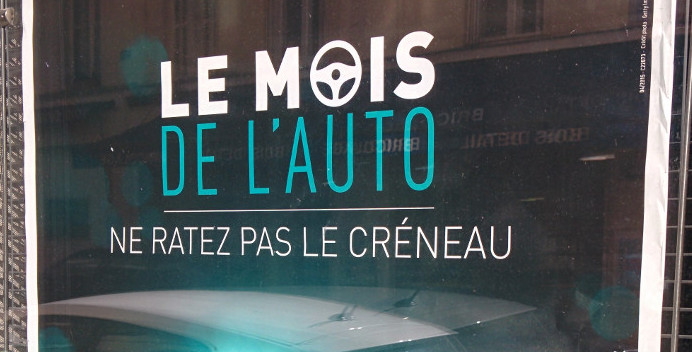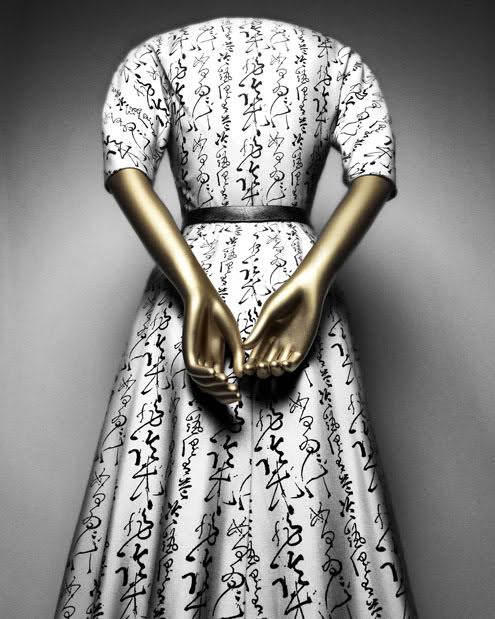Malapropism of the week
Favorite headline of week. He pitches righty, lefty — and evidently, also underwater. Faces Aquaman in next outing. pic.twitter.com/efxaQxFp8Z
— Neill Woelk (@NeillWoelk) June 8, 2015
[h/t David Donnell]
Favorite headline of week. He pitches righty, lefty — and evidently, also underwater. Faces Aquaman in next outing. pic.twitter.com/efxaQxFp8Z
— Neill Woelk (@NeillWoelk) June 8, 2015
[h/t David Donnell]
An image composed of a circle of fourteen symbols of major world religions has been circulating on the web:

The example pictured here is from this site.
Read the rest of this entry »
 Spending a couple of months in Paris frequently exposes me to the wonders of semantic drift. Many of the new French words that I'm learning turn out to be unexpected figurative senses of words that I already knew — though sometimes I need to look them up to realize that I knew them, because the figurative usage is non-obvious.
Spending a couple of months in Paris frequently exposes me to the wonders of semantic drift. Many of the new French words that I'm learning turn out to be unexpected figurative senses of words that I already knew — though sometimes I need to look them up to realize that I knew them, because the figurative usage is non-obvious.
For example, the picture on the right shows a sign in the window of a local Credit Agricole branch, urging me not to miss the "créneau". What, I wondered, is a créneau, and what would it mean to miss it?
Read the rest of this entry »
David Donnell:
A friend in Ames, Iowa, sent me this photo of a small framed picture she purchased at a garage sale in her town. She is curious what the language is, and what it says…in English.
She added, “I got the impression from the other items at this woman's sale that she had done some traveling and picked up souvenirs from all over the world. (I could be wrong, though!)”
Myself, I am clueless about what language it is, and clueless how to even google it! (I tried a Google image search and got nothing useful, and googling the word “Capamoba” also didn’t help.)
Read the rest of this entry »
Heath Mayhew writes:
The other day, one of my friends asked how to spell bingeing. Quickly, we all chimed in that it clearly couldn't be "binging". I didn't believe their conviction, so we looked it up in American Heritage 3rd and I lost. Below is a list of words we discovered to retain the "e" (which for me, looks so odd) and a list of words that lose it. Is there any unusual law that governs this? Any arcane rule that dictates whether or not one keeps or drops the "e"? We tried looking it up in Garner's American Modern Usage, but to no avail. It is a simply that words keep the 'e' in order to avoid confusing it with other words? I.e. singeing vs. singing.
binge – binging or bingeing
singe – singeing
cringe – cringing
tinge – tinging or tingeing
hinge – hinging
impinge – impinging
whinge – whingeing
(used The New Oxford American, 2nd)
Read the rest of this entry »
Following up on the grammar published in 1780 by C.F. Lhomond, I took a look at the La Grammarie Genérale et Raisonée de Port-Royal, Par Arnauld et Lancelot. But the edition that Gallica steered me to turned out to be preceded by an "Essai sur l'origine et les progrès de la Langue françoise", by Claude Bernard Petitot (1772-1825).
This introductory essay is 246 pages long, so it took me a while to page through it to find the actual Port-Royal grammar. And as it scrolled by, it revealed itself as a curious screed, with essentially no connection with the grammar that it introduces. In the guise of a history of French literature, M. Petitot argues that French language, literature and culture became sadly degenerate in the 18th century. And apparently it was all the fault of the barbaric English, aided by those villains Voltaire and Rousseau.
[Warning: I found this interesting, as a reflection of one influential intellectual bureaucrat's thinking in the France of 1803 — the year of the Louisiana Purchase, the Haitian Revolution, and the start of the Napoleonic Wars. It's surprising that in 1803, just 14 years after the French revolution, the man in charge of public education in the Paris area is pining in print for the perfect politeness of Louis XIV's court, and railing against the "empty theories" of 18th-century political philosophy. Petitot's opinions about socio-culture degeneration strike me as analogous, mutatis mutandis, to those of some figures on the current American political scene. But you may well disagree, certainly about the interest and perhaps also about the analogy.]
Read the rest of this entry »
One of the small streets near where I'm staying for a couple of months is the Rue Lhomond, which the street signs tell me is named for a grammarian, Charles François Lhomond (1727-1794). Since I pass the intersection every day on my way to the LPP, I've been curious about what this grammarian's grammar was like. And Gallica offers his Élémens de la Grammaire Françoise (1780), which begins like this:
La Grammaire est l'art de parler & d'écrire correctement. Pour parler & pour écrire on emploie des mots : les mots sont composés des lettres.
Il y a deux sortes de lettres, les voyelles et les consonnes.
Les voyelles sont a , e , i , o , u , & y. On les appelle voyelles, parce que, seules, elles forment une voix, un son.
Il y a trois sortes d'e ; e muet, e fermé, e ouvert.
Grammar is the art of speaking and writing correctly. To speak and to write one uses words : words are made up of letters.
There are two kinds of letters, vowels and consonants.
The vowels are a , e , i , o , u , & y. We call them vowels, because, alone, they form a voice, a sound.
There are three kinds of e ; mute e, closed e, open e.
Read the rest of this entry »
The New York Metropolitan Museum of Art has a very-well received exhibit, “China: Through the Looking Glass” (7 May–16 August, 2015), which “explores the impact of Chinese aesthetics on Western fashion and how China has fueled the fashionable imagination for centuries.”
One of the objects displayed is a (rather fetching) "Quiproquo" cocktail dress by Christian Dior (1951), the calligraphic pattern of which is based on 19th-century rubbing from a 10th-century stele inscription describing a sudden illness, an abdominal pain. (You can see both here; they’re images 12 and 13 as you scroll down.)
Here's the dress:

Christian Dior (French, 1905–1957) for House of Dior (French, founded 1947)
"Quiproquo" cocktail dress, 1951
French
Silk, leather
The Metropolitan Museum of Art, New York, Gift of Mrs. Byron C. Foy, 1953 (C.I.53.40.38a–d)
Photography © Platon
Read the rest of this entry »
Jan Söhlke was intrigued by the issue of fake Chinese proverbs that had come up in some recent Language Log posts. That reminded him of the time when he was preparing his MA Thesis he stumbled across an unusual selection of Chinese proverbs. His thesis is on Wilhelm Raabe's novel Das Odfeld. As a motto Raabe uses a quote from a text by his own grandfather, August Heinrich Raabe, that appeared in a journal called the Holzmindisches Wochenblatt (Holzminden Weekly) back in 1787. As Jan was leafing through the journal, he noticed a group of Chinese proverbs. It struck him as a bit odd, so he made a copy. Unfortunately, at the time he did not own a digital camera nor did he have a cell phone with camera, so he had to type them by hand.
Read the rest of this entry »
When you read this Radio Free Asia headline, what do you think?
"China Holds Two Activists Linked to Heilongjiang Shooting Death" (5/20/15)
Here's the photograph that accompanies the article:

Activist Wu Gan stages protest outside Jiangxi High Court, May 19, 2015.
Photo courtesy of Boxun.
Read the rest of this entry »
Photograph of a Chinese ad spotted in a Beijing elevator by David Moser, who also provided much of the analysis that follows:
Read the rest of this entry »
Sign on a pet-grooming place in Banqiao, Taiwan (contributed by Mark Swofford):
Read the rest of this entry »
Bill Hennessey is a retired professor of law, including international law and the law of the sea, at the University of New Hampshire School of Law. He wondered whether I have been following the Law of the Sea issues surrounding the building of Chinese bases on shoals in the South China Sea (SCS). (I call it the Southeast Asian Sea [SEAS].) I certainly have been following China's building of artificial islands on coral shoals in contested waters far from its own shores, but much closer to the shores of other countries. I have not, until now, thought about the linguistic aspects of the legal issues.
Read the rest of this entry »